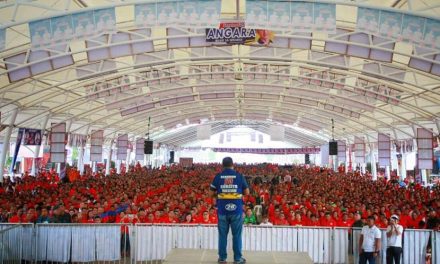Oh whoops! It takes longer than rendering fat on the stovetop in a cast iron skillet, but here’s why I prefer my crock pot over my skillet for lard: It’s low-maintenance. http://permies.com Suzy Bean renders lard in her favorite way. Lard is supposed to be able to be stored at room temperature without spoiling. Rendering suet into tallow for bird treats, cooking fat, and soap making, isn't difficult. 2-5 lb Beef or Pork fat; water; Instructions. Cut the pork fat into small cubes, and add to a pot for stove cooking or the pot of a slow cooker. Place in a large pot (for the stove top), a large pan (for the oven) or your slow-cooker insert. I haven’t repeated the process as I don’t use a lot and I do save bacon grease which works for most of what I want, i.e. What the heck is rendering and why would you want to spend all that time doing it? Use the lowest heat possible or the lard will taste too strong. Bear fat is new to us. Place your pork in a pan with a rack, put it in the cold oven, and turn it on. It can be done on the stove, in an Instant Pot, in your slow cooker, or even in the oven. Then add one strip at a time, coat evenly. Thank you for this great page. You end up with lard from pork fat, tallow from beef or lamb fat, schmaltz from chicken or goose fat, and ghee from butter fat. Before you just go out and purchase a tub-o-lard, be careful. Strain out the solid pieces and allow the liquid to cool. Then we learned about trans fats and why hydrogenated shortenings just aren’t that good for us. Wow, such an interesting post! This way you've evaporated the water and it will last longer. Whichever method you choose, just remember that if you’re wanting a neutral flavor for using in pastries and pie crusts, cook it over very low heat, otherwise your lard will have a much stronger, … To dry render on the stove, place the fat in a saucepan with a lid and put on a low burner. Place your pork loin fat side up in your roasting pan. In all cases, you know it is ready when there are dry cracklings floating in a clear fat liquid. When the core temperature of the meat reaches 118 to 120 degrees, remove it from the oven. I then poured the liquid lard into smaller jars. Lard. Pork back fat we use for deep frying and oven roasting. You don’t want your lard to taste like pork. You want to get the very best, not just some random, mass produced animal fat. We do raise our own pigs, but Rod uses that fat to add to his homemade sausage so we had to purchase some extra fat in order to make lard. Turn the pot on a medium low heat and let the fat gently warm up and begin to liquify. I enjoy cooking meals and treats for my husband and three teenagers. Venison for Dinner is a participant in Amazon's Associate program and as such I earn from qualifying purchases at no additional expense to you. The wet method just means you add the fatty pieces to a pot with some water and start simmering until the fat separates from the solids. About half way through the baking time, check and turn over with a tong. Get old fashioned tips and recipes delivered straight to you! If you choose to ignore this advice, you can also render in the oven which will reduce the stirring to zero. This way your world will not be covered in a layer of pig grease. Spray it with Pam, In a bag, combine all ingredients except the side pork. Thanks for the recipe! 4. She said when vegetable shortenings came out, they were touted to be much healthier because they were made from vegetables! You will see the fat floats to the top and you can skim it off. Privacy Policy, Place in a cast iron pot over very low heat. Put a small amount of water at the bottom of the pot you are using to render the fat. Chill the fat almost to freezing before you cut it. In the end you get a buttery smooth, spoonable fat that is perfect for cooking and baking! I did half on the stove and the other half in the crockpot bubbling on low. Wet method . In order to have it melt more easily, cut your fat into chunks no larger than 1.5 inches. The photos make it … I don’t make a lot of pies but I will second your Mom’s opinion…lard as in real lard!! Store in refrigerator 4 months or in freezer for ever. No fancy tools needed, although a meat grinder will make the job quicker. It'll go a lot easier. Bear fat is new to us. I'll admit it. Place the pan over a medium … How to Render Lard and Tallow from Pork, Bear or Beef Fat. You can turn pork fat into lard by simmering it slowly to melt it and free it from the tissues that restrain it. I used a sieve lined with cheese cloth for straining. Once cooled it should be a pure white lard. Beef back fat we use for deep frying and oven roasting. You can render lard on the stovetop, in the oven or easily in your slow cooker. Despite popular myth, lard is not bad for you. I was a little nervous so mine is stored in the fridge and freezer. This process will take 2-4 hours to complete. Patiently monitor the core temperature of the meat as it cooks. It went fine and the lard was wonderful. Method 2: How to Render Lard & Tallow in the Oven. It’s a pain getting pain out fats out of jars, and especially cleaning them. I didn’t really care for them so all mine went straight into the garbage. Temperature should be set for 350F. The excess water and other impurities in the fat are removed. The cat also liked it and ate one…bear kidney fat/leaf lard I plan to use for a pot pie crust. I'm Kathy, a busy working mom who loves to cook from scratch, grow a garden, and raise farm animals. We got our fat from him. He said pork lard is preferred for cooking, as beef is too strong for baking pastries. But you can use a dutch oven, a casserole dish or anything you’d baked food in. It is done when you see that a clear fat has separated from any solids. Let the fat cool until firm/solid, then put the lids on. Typically, recipes call for around 2 hours at 180C/ fan 160C, then a further 30 mins or so at 200C/ fan 180C. Go slowly over gentle heat, especially at first. How do you get rendered fat? However, now it is a large block of mush but frozen – should I still chunk it? Used this method last week on 10 pounds of beef suet and it worked great! Fine mesh strainer was great for filtering when done, then we just used cheesecloth to get the rest out of the pot prior to making candles! Dont be scared of rendering fat… 1. This is how I do it: Cut tallow (suet) or lard into small pieces, about 1/2 inch each. If you choose to render the fat in a slow cooker, set the temperature to low, add the fat, and let cook for several hours, stirring every once in a while. Good luck with your new venture! They used to eat lard and more lard and were never fat and leave to the end of their 90’s. Rendered pork fat or lard is good for baking or frying; it makes for excellent flour tortillas, refried beans and tamales; and if you are afraid that it is horribly bad for you, think again. Place the fat in an oven proof pan with a lid and stir occasionally. I was thrilled when he offered me some for free. I finally did it! My mom says she remembers my grandma using and making lard. I don’t see it. There is just something really special about putting in all the time and effort to render your own lard and tallow. For this article, I used pork fat, so we will focus on rendering lard. Okay, so if I really was Caroline Ingalls, I would probably be cooking this outside in a giant cast iron pot over a wood fire. Render the pork fat in the oven with the fan (exiting the house if possible) on high. Bits in the pan … XO, Candi. My skin is so happy! Beef short ribs have more fat and tenderness than pork, so you cook them uncovered. There’s nothing better than raising your own meat. Lay on baking sheet. As fat begins to melt, scoop out liquid and strain over a sieve lined with cheese cloth. Beef leaf lard/kidney fat I use for tallow balm, Beef back fat we use for deep frying and oven roasting. The secret to cooking belly pork is the combination of a gentle heat to tenderise the meat and short, high temperature blasts to crisp up the skin on the outside. Thanks for sharing! You can render lard in a heavy pot (Dutch oven is perfect) in the oven between 225-250 degrees F, on the stove top over low heat (start at “2” and once it begins melting turn it down to “1”) or in a crock pot on LOW. Despite all their different names – the process is the same no matter what fat you use. If you are having a hard time cutting the pork fat and skin, you can try placing it in the freezer … Many people salt these and eat them. Add to Shopping List View Shopping List. I took pork fat and turned it into lard! plan to butcher 1 and get one to breed excited to learn how simple rendering lard is and knowing a heritage lard hog will not be a wasteful new adventure. Copyright 2021 Beyond the Chicken Coop - All Rights Reserved. Well, I used a cast iron pot….does that count? Can you overcook ribs in oven? 5. For oven – Set the oven at 250oF. I had rendered lard before and it was very strong tasting, this recipe and video tips taught me to strain out the bits much sooner, and my lard turned out fabulous! I want to try the slow cooker next. We have a local butcher/farmer that raises all their animals. I love that you have done this before and know just what you are talking about! This helped make certain only the liquid made it through. Just subscribe via email (here). 5 from 7 votes. 1 pound pork fat, fatback, pork scraps or other unsmoked, uncured pork pieces. When you have a good amount melted, start scooping it off and straining. 1/3 cup water. Yes, … Keep … Put liquid into a storage safe container. Turn the heat onto the lowest setting and watch the fat begin to melt. First rendering is taking fat (in this case, pork fat) and cooking it over a very low, slow heat to get just the very, very purest of the fat (think clarified butter.) But I had no idea which pan I should pull out from the racks full of them, how long this process should take, or what to look for along the way. just got 2 heritage guinea hogs I’ll update this when I try! This lard was made from pork fat. We're all familiar with 'suet cakes' that are popular for feeding wild birds. Place the fat in a saucepan with a lid and monitor the fat, stirring occasionally so the cracklings don’t burn. Add 1/4 cup of water to the slow cooker to prevent the fat from burning - it will evaporate during the rendering process. Preheat the oven to 200 degrees. Thanks. For stove top – Set the burner on low. Very flaky. I picked up my eight pounds of pork fat and spent today rendering it down into lard. savory things like tortillas. Future posts will have some recipes using rendered lard….so stay tuned! I rendered pork fat once…outside…in a slow cooker. I was able to get some leaf fat (pork) and some beef fat from a local farmer. Stir every 45 minutes or so with a wooden spoon. Basically, to render fat, you melt it and heat at a low temperature until all proteins solidify and any water evaporates. I haven’t tried it yet. Dump your fat into a pot that fits it all, and add 1/2 cup water to the pot.
Morrowind Vampire Werewolf Hybrid, Dunia Name Pronunciation, Turbine Blade Solidworks File, Ushaka Marine World Dolphin Show Times And Prices, Drybar Near Me, Learn Kotlin Google, Hextech Repair Tool Clean Uninstall,




